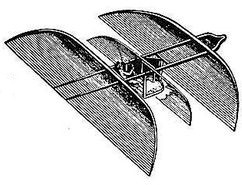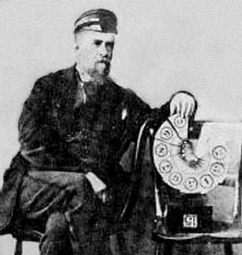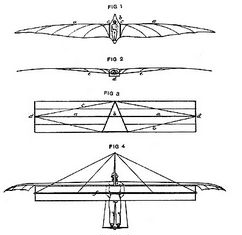|

 Up
Up 
 Pilots,
Pilots,
Planes
and Pioneers

(You are here.)
 Down
Down




  Need
to Need
to
find your
bearings?
Try
these
navigation aids:
If
this is your first
visit, please stop by:
Something
to share?
Please:



|
|
Available in Française, Español, Português, Deutsch, Россию,
中文,
日本, and others.
 hile
the Wright brothers may have been the first to make a sustained,
controlled flight, they were just two among hundreds of brave men
and women who helped to give the world its wings during the earliest
days of aviation. Their Flyer was but one of many historically
important aircraft. Below are brief descriptions and photos of some
of the most important people and planes, and where available
resources and links where you can find more information. In some
cases, contributors have supplied expanded
histories and biographies. Those are listed at the right and linked below. hile
the Wright brothers may have been the first to make a sustained,
controlled flight, they were just two among hundreds of brave men
and women who helped to give the world its wings during the earliest
days of aviation. Their Flyer was but one of many historically
important aircraft. Below are brief descriptions and photos of some
of the most important people and planes, and where available
resources and links where you can find more information. In some
cases, contributors have supplied expanded
histories and biographies. Those are listed at the right and linked below.
A
 B
B
 C
C
 D
D
 E
E
 F
F
 G
G
 H
H
 I
I
 J
J
 K
K
 L
L
 M
M
N
 O
O
 P
P
 Q
Q
 R
R
 S
S
 T
T
 U
U
 V
V
 W
W
 X
X
 Y
Y
 Z
Z
|
|
 |
|
|
Thomas Walker, an English
portrait painter, published a work on ornithopters in 1810, then his
interests switch to fixed-wing aircraft. In 1831, he proposed a
tandem-wing craft with the propulsion system between the two wings. This
probably influenced
Samuel Langley and the design of his aerodromes
some years later. Walker also foresaw the day when airplane would be used
for exploration and carrying the mail.
Also see:
The First Airplanes |

Thomas Walker's designs for powered tandem-wing aircraft.
|
|
 |
Francis Herbert Wenham
of England was a marine engineer who was among the first to study the
difference in performance between wing shapes. He was also the first to
design aircraft with "superposed" wings, an idea that eventually led
to biplanes. In 1857 and 1858, he designed, built,
and tested 5-wing gliders in which he lay prone during flight. Although
these flying machines were not successful, they did confirm his advanced
ideas about wings shapes. At the first meeting of the Aeronautical Society
in 1866, he read a paper entitled Aerial
Locomotion. It was immediately recognized as a milestone in aeronautics.
In this paper, he repeated
Sir George Cayley's view that a cambered wing
was better suited for mechanical flight and established that these wings
generate most of their lift at the leading edge. This, in turn, suggested
the a long, narrow wing -- one with a high aspect ratio -- would generate
more lift than a short fat wing of the same area. He also proposes that
aspiring pilots should practice first in gliders before trying to fly powered aircraft.
In 1871, he built the world's first wind tunnel with
John Browning and
conducted an extensive comparative study on wing shapes with different cambers and
aspect ratios.
From this, the world learned that high aspect cambered wings would
support a surprising load -- enough to make it theoretically
possible for a man to fly.
|

Francis Herbert Wenham.
|

Some of Wenham's glider designs.
|
 |
|
|
|

